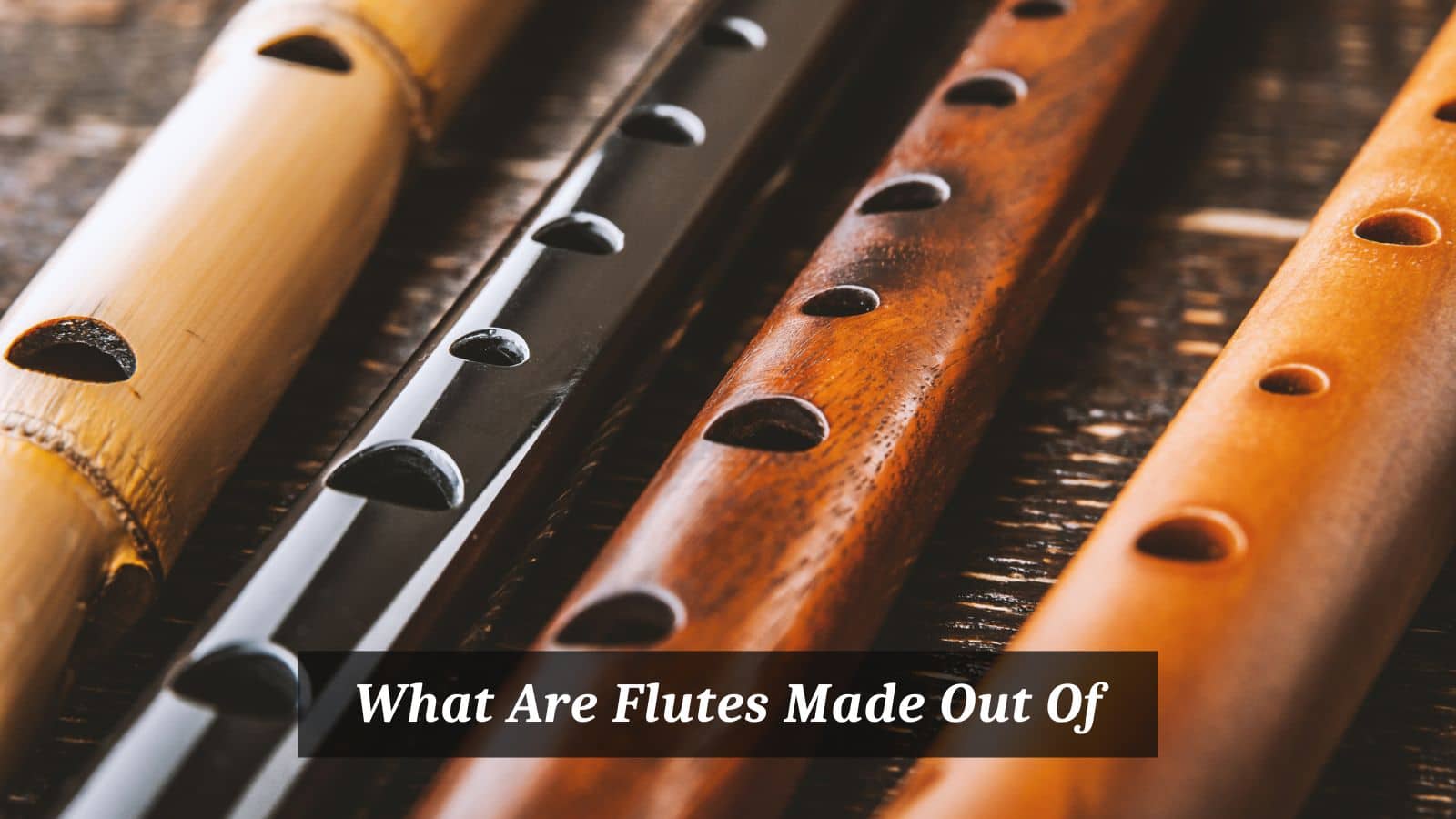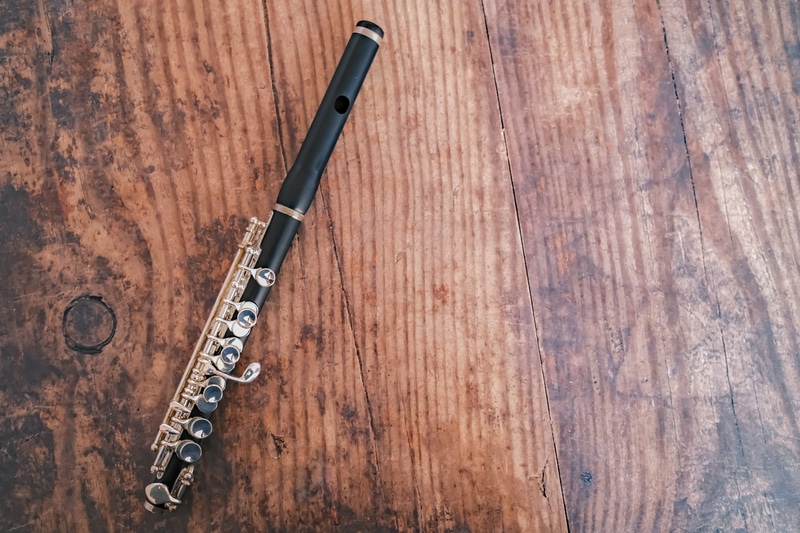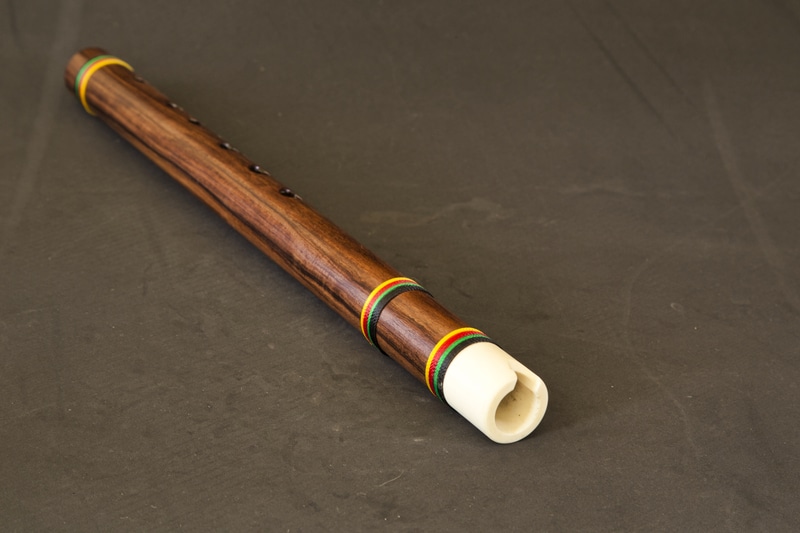
Flutes are a popular type of woodwind instrument that produce sound when air is blown across an embouchure hole in the headjoint, causing the air inside the flute to vibrate.
Flutes have been around for thousands of years and, over the course of history, have been made from a variety of materials, including bone, wood, metal, and plastic.
Below, we’ll examine the different materials that flutes are made from and how they affect the sound and playability of the instrument, as well as which purposes they best serve.
What Are Flutes Made Out Of?
Flutes can be made from a variety of materials, each of which has its own unique properties and characteristics. Some common materials used to make flutes include:
Wood: Wood is a traditional material used to make flutes. At one point in history, nearly all flutes were made from wood; it is only in the last 150 years that it has waned in popularity.
Though some professional orchestral or solo flutists still choose to perform on high-end, handcrafted wood instruments, today, wood flutes typically appear most often in period or native music ensembles.
Wood is a natural material that is easy to work with and gives the instrument a warm, rich sound. However, it is also prone to warping and cracking over time, so it requires careful handling and regular maintenance.
Additionally, a wood flute may lack the volume and projection that modern orchestral flutists are required to play with in order to be heard over the large orchestra in the back of a concert hall.
Metal: Metal flutes are popular choices for classical musicians because they have a bright, clear sound that is generally louder than that produced by wood.
Student flutes are generally made from nickel that is plated in silver, while more advanced-level flutes are made from silver, gold, or platinum (or combinations of the three).
Each type of metal has a slightly different sound quality, but flutes of different metals can still easily blend together in ensembles. Metal flutes are also more durable than wood ones and are resistant to damage from temperature and humidity changes.
However, they can be more expensive to purchase and maintain, and they may be heavier than other types of flutes.
Plastic: Plastic flutes are a popular choice for beginner musicians because they are relatively inexpensive and easy to play. Plastic flutes are also lightweight and durable, making them a good choice for young musicians or for those who travel frequently with their instrument.
However, they may not have the same warm, rich sound as wood or metal flutes and are not a suitable choice for advanced players.
Other materials: Throughout history, flutes have also been made from other materials, such as bone and ivory, which are prized for their unique sound qualities.
However, the use of these materials is often controversial due to concerns about animal welfare and sustainability. Additionally, these flutes are extremely difficult to play. Many bone flutes that have been recovered from prehistoric times are not playable by modern musicians.
Factors that Affect the Sound and Playability of Flutes
In addition to the material used to make the flute, there are several other factors that can affect the sound and playability of the instrument. These include:
The size of the flute: The size of the flute, or its length and diameter, can affect the range and timbre of the instrument. For example, larger flutes tend to have a lower pitch and a more mellow sound, while smaller flutes have a higher pitch and a brighter sound.
The highest-pitched instrument in the flute family is the piccolo, which typically plays in the range between C5-C8 (one to four octaves above middle C on the piano). A standard flute plays between C4-C7, while alto and bass flutes play even lower.
The type of headjoint: The headjoint, or the part of the flute where the mouthpiece is located, can also affect the sound and playability of the instrument.
Different headjoints can produce different timbres and can make the flute easier or more difficult to play. Flutists will often mix and match headjoints with bodies.
For instance, some people prefer the sound of gold to silver, but can’t afford a full gold flute. Instead of purchasing an entirely gold instrument, they will place a gold flute on a silver body to change the sound of the silver flute.
Choosing the Right Flute for Your Needs
When it comes to choosing a flute, it’s important to consider your own needs and preferences. If you are a beginner musician, a plastic flute may be a good choice because it is relatively inexpensive, easy to play, and is very light.
There won’t be any guilt if you decide the flute isn’t your new favorite hobby. However, if you are a more advanced player or if you are looking for a flute with a warm, rich sound, a wood or metal flute may be a better option.
If you’re specifically looking to play in an orchestra or other professional ensemble, a metal flute will be most effective unless you have a custom wood instrument crafted.
It’s also important to consider the care and maintenance requirements of the flute. Wood and metal flutes will require more maintenance and care than plastic flutes, but they will also have a longer lifespan if properly taken care of.
If you’re not sure which type of flute is right for you, it may be helpful to try out different instruments to see which one feels and sounds the best to you. You can also consult with a music teacher or instrument retailer to get more information and guidance on choosing the right flute.
Keep in mind that the best flute for you may not be the one you initially sound best on. Plastic flutes will be significantly easier to play than wood or metal flutes, but with time and practice, you can master the more advanced instruments and produce a full, beautiful sound.
In conclusion, flutes can be made from a variety of materials, including wood, metal, and plastic, each of which has its own unique characteristics and benefits.
The material used to make a flute can affect its sound and playability, as well as its maintenance requirements and lifespan. When choosing a flute, it’s important to consider your own needs and preferences, as well as the care and maintenance requirements of the instrument.


